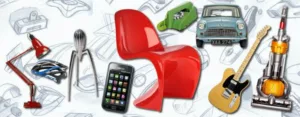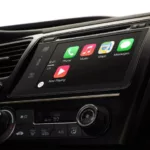Product design is constantly evolving. For example, an item as straightforward as a lead pencil has enabled the discovery of graphene, thanks to technology. There are countless other examples of how technology has transformed products and led to further innovative creations but let’s begin by taking a look at these 5 ways technology has inspired and influenced product design.
1. Wheels
When our ancestors first invented the wheel to ease their transportation problems they’d have never imagined how this essential item could evolve in future centuries. From the cumbersome circular wooden wheels of the Roman era to the first modern tyre, wheels have changed beyond recognition.
Hospitals across the world use castors from Tente to transport patients to and from wards to operating theatres, most offices will contain chairs with wheels attached to their base. Now wheel design is set to take a further leap forward with the evolution of the punctureless tyre, all thanks to new technological developments.
2. The evolution of the smart phone
Designers often talk about form and function. A product is of absolutely no use if it looks stunning but the technology invested in it does not work. The early mobile phones were challenging, they looked like bricks, rarely worked and the reception was a nightmare.
Today’s smartphones look good – and they work. New technological innovations have pushed forward the design of the phone so that many consumers prefer using smartphones to laptops. Smartphones aren’t simply used as a means of verbal communication, they can help you shop, message, game and catch up with films or TV.
3. The printing revolution
Printing has changed enormously since Guttenberg developed the first press in Europe in around 1440. Digital printing was seen as a milestone but now there’s a new kid on the block.
Thanks to technology, 3D printing can replicate human body parts, machine tools and a whole host of wonderful innovations. In this case the technology is developing so rapidly that consumers can now buy these items to install in their homes. Very soon you’ll be able to replicate anything you want with a 3Dprinter.
4. The graphene journey
The use of graphite for drawing is as old as the hills; well the first graphite pencil was invented in 1564. Scientists in the 21st century discovered that graphene; a derivative of graphite, has the potential to become one of the strongest materials ever developed. Products that use graphene will include car parts, applications in the electronics market and act as a replacement for silicon. Many product designers are already experimenting with graphene to develop the products of the future.
5. Wristband monitors
The communications revolution has added an extra dimension to our lives with the wristband monitor. These can be used to gauge your heart rate, pulse and other life signs when exercising, as well as monitoring your pace. Wristband monitors are popular not simply for their technological efficiency but also because they look good and are easy to wear.
An increasing number of older people also wear electronic wristbands to monitor their diabetes, blood pressure and other health problems. In these cases the wristband also acts as a personal alarm, so that help can be summoned in case of emergency. The product design in these accessories is first class and the technology can save lives.








